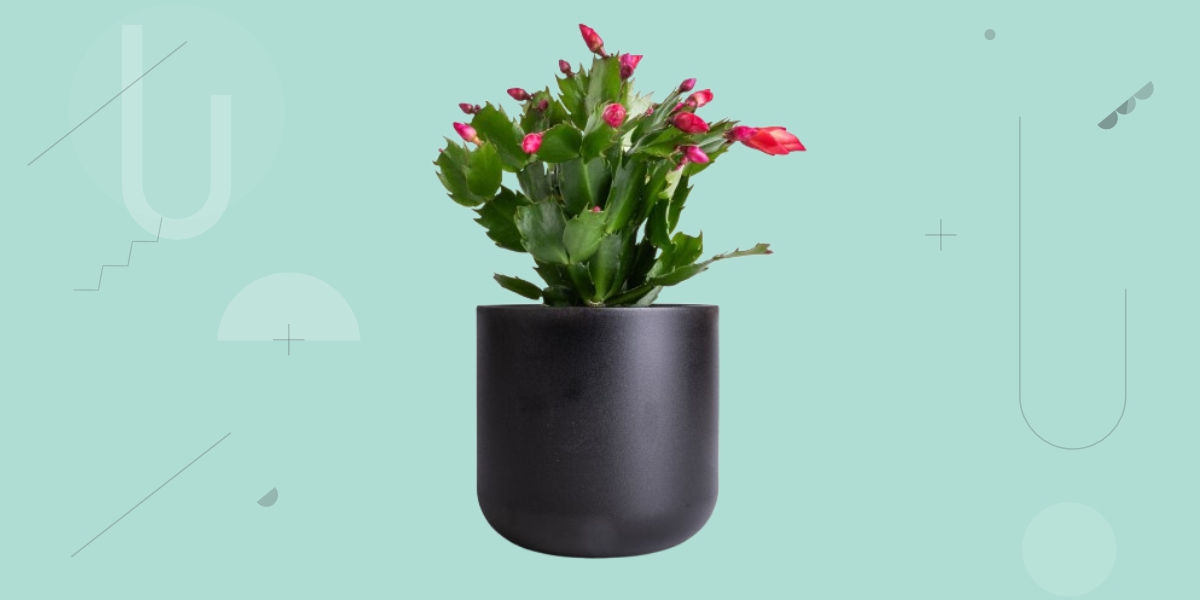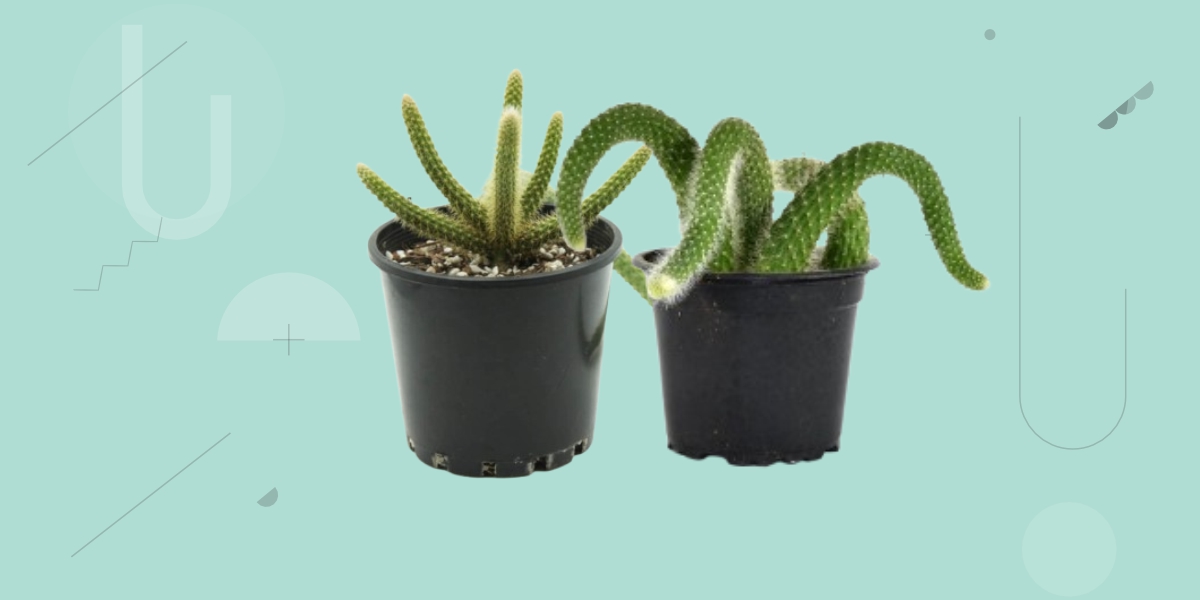Mini cacti have become the darlings of indoor gardening. Their quirky shapes, vibrant blooms, and low-maintenance reputation make them a favorite for plant lovers and busy homeowners alike.
Overwatering is the number one killer of indoor cacti, while underwatering can leave your plant shriveled and sad. So, how often should you water mini cacti indoors? The answer isn’t as simple as a set schedule. Instead, it’s about understanding your plant, its environment, and a few key principles.
In what follows, we will walk you through everything you need to know about this topic and explain how often to water mini cactus indoors.
Key Highlights
- Always let the soil dry out completely before watering mini cacti to prevent root rot and overwatering issues.
- Watering needs change with the seasons – more frequent in spring and summer, much less in fall and winter.
- Factors like pot size, soil type, light, and indoor climate all influence how often your mini cactus needs water.
What Do We Know About Mini Cactus?
Mini cacti, like their larger relatives, are true survivors of some of the world’s harshest environments. Their natural habitat is typically arid or semi-arid regions (Source), where rainfall is rare and unpredictable. To cope with these tough conditions, cacti have evolved a remarkable set of adaptations.
Instead of traditional leaves, they feature spines – these not only deter herbivores but also drastically reduce water loss by minimizing the surface area through which moisture can escape.
If you ever get pricked while handling your cactus, check out our guide on how to get tiny cactus needles out of skin for the safest and most effective removal methods.
The outer layer of a cactus is covered with a waxy, cereous cuticle that acts as a barrier against evaporation, helping the plant retain precious water for longer periods.
Key Differences Between Mini and Full-Sized Cacti
While both mini and full-sized cacti share these survival strategies, their size introduces some important differences in how they handle water. Mini cacti are typically grown in much smaller pots (Source), which means there’s less soil to hold moisture.
As a result, the substrate around their roots dries out more quickly compared to the larger containers used for mature, full-sized cacti.
Mini cacti also have shallower root systems, making them more sensitive to fluctuations in soil moisture. This means they can be more prone to both underwatering and overwatering, depending on your watering habits and the environment they’re in.
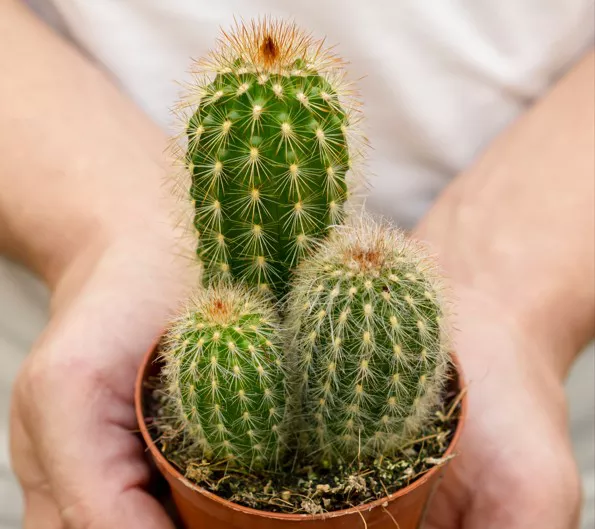
On the other hand, full-sized cacti, with their deeper roots and greater water storage capacity, can tolerate longer dry spells and are less likely to suffer from brief periods of neglect.
For mini cacti, attentive care and a well-draining soil mix are particularly important to prevent root rot and keep these tiny wonders thriving.
How Indoor Environments Affect Watering
Bringing a mini cactus indoors changes the watering game entirely. Indoors, mini cacti are shielded from natural rainfall and exposed to more stable temperatures and humidity levels.
However, factors like central heating, air conditioning, and the amount of sunlight your plant receives all influence how quickly the soil dries out. For example, a cactus on a sunny windowsill in a warm room may need water more often than one in a cooler, shaded spot.
Indoor air is often drier in winter due to heating, which can cause the soil to dry out faster, while air conditioning in summer might keep things cooler and slow down evaporation.
What’s more, the intensity of indoor light is usually much lower than in the wild, which means your cactus’s growth, and therefore its water use, slows down.
All these variables lead us to conclude that there’s no one-size-fits-all watering schedule. Rather, the best approach is to check the soil regularly and adjust your routine based on your home’s unique conditions. We’ll talk about this in more detail below.
Why Mini Cacti Need Special Watering Care
Cacti evolved in arid, sun-baked deserts, where rainfall is rare and unpredictable. Their thick, fleshy stems store water for long periods, allowing them to survive droughts that would kill most other plants.
Indoors, on the other hand, the environment is very different – less sunlight, more stable temperatures, and less airflow mean water evaporates much more slowly. Mini cacti, especially those in small pots, are even more sensitive to watering mistakes.
Understanding the Watering Needs of Mini Cacti
Before you reach for the watering can, let’s explore the fundamental principles and key factors that determine how and when to water these resilient plants.
The Golden Rule: Let the Soil Dry Out
The most important rule for watering mini cacti is simple: Always let the soil dry out completely between waterings.
Cactus roots are adapted to absorb water quickly after rain, then sit dry for weeks. Keeping the soil constantly moist suffocates the roots and leads to rot.
Factors That Affect Watering Frequency
No two homes are exactly alike, and several factors influence how often your mini cactus needs a drink:
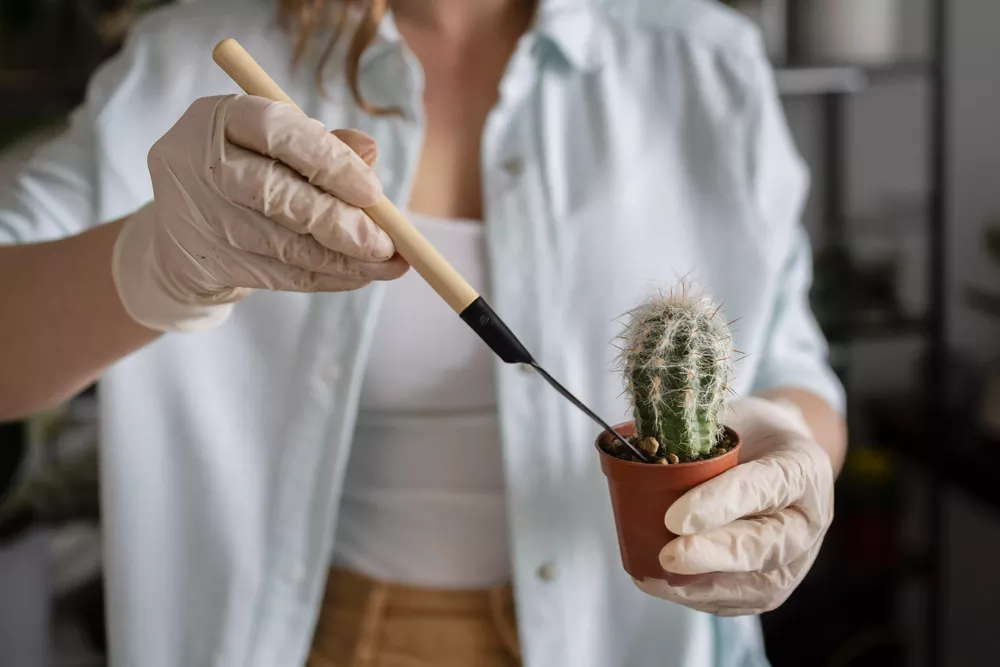
- Pot size: Small pots dry out faster than large ones.
- Pot material: Terracotta breathes and dries faster than plastic or glazed ceramic.
- Soil composition: Well-draining cactus mix dries quickly; regular potting soil stays wet longer.
- Light and temperature: Bright, sunny spots and warm rooms increase evaporation.
- Humidity: Dry air dries soil faster; humid air slows evaporation.
- Season: Cacti grow actively in spring and summer, but slow down or go dormant in fall and winter.
How Often Should You Water Mini Cacti Indoors?
Now, it’s time to get to the heart of the matter: understanding the right timing and frequency for watering your mini cactus is key to its success.
The amount of water your plant needs changes with the seasons, so being aware of these shifts is essential for keeping it healthy. Here’s how you can fine-tune your watering schedule all year long.
Spring and Summer (Growing Season)
During the warmer months, your mini cactus is actively growing and will need more water. A good rule of thumb is to water every 10-14 days, but always check the soil first.
In very bright, warm conditions, or with very small pots, you might need to water as often as every 7 days.
- Pro tip: Never water on a fixed schedule. Instead, check the soil moisture before each watering.
Fall and Winter (Dormant Season)
As daylight hours shorten and temperatures drop, cacti enter a rest period. Their water needs plummet. Water every 4-6 weeks during winter, or even less if your home is cool and the cactus isn’t growing.
- Warning: Overwatering during dormancy is a common mistake. If in doubt, wait another week!
To make watering your mini cactus even easier, here’s a quick reference chart based on expert recommendations. This seasonal guide outlines how often to water throughout the year, helping you adjust your routine as your plant’s needs change with the seasons.
| SEASON | WATERING FREQUENCY | ADDITIONAL INFO |
| Spring / Summer | Every 1–2 weeks | Active growth, soil dries faster |
| Fall | Every 3–4 weeks | Growth slows, reduce watering |
| Winter | Every 4–6 weeks | Dormant phase, minimal water needed |
How to Tell When Your Mini Cactus Needs Water
It’s easy to second-guess whether your cactus is thirsty or content. Fortunately, there are simple, foolproof methods to check soil moisture and spot visual cues from your plant. These techniques will help you confidently decide when it’s time to water.
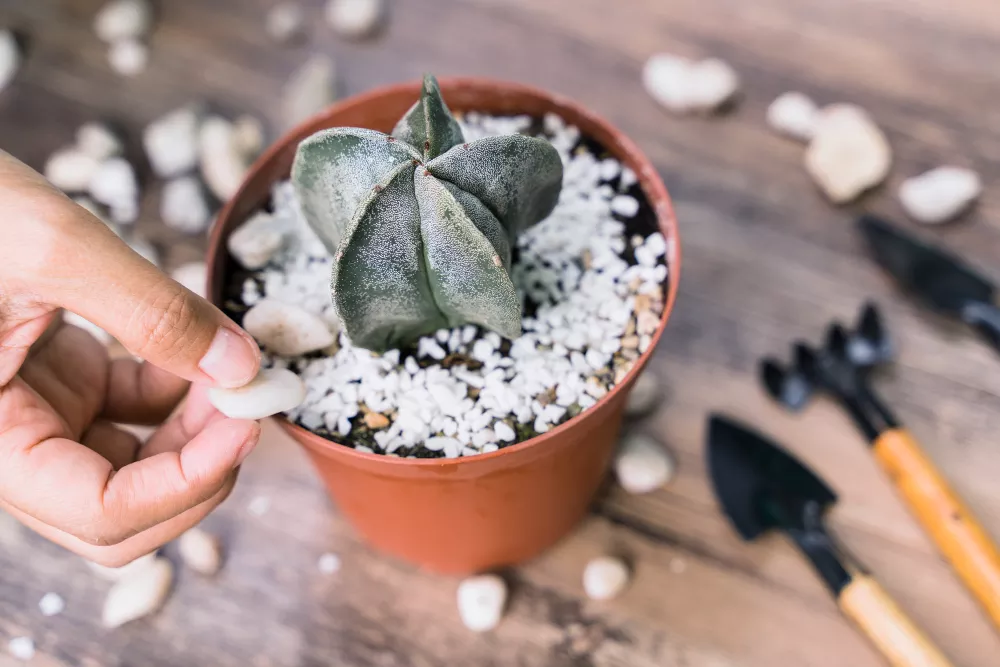
The Finger Test
The simplest and most reliable method is the finger test:
- Stick your finger 1-2 inches into the soil.
- If it feels bone dry at that depth, it’s time to water.
- If you feel any moisture, wait a few more days.
The Skewer Test
If you don’t want to get your hands dirty, use a wooden skewer or chopstick. Insert it into the soil for a few minutes, then pull it out. If it comes out clean and dry, your cactus is thirsty. If it’s damp or has soil sticking to it, wait.
Visual Clues
Spotting the signs of overwatering or underwatering in your mini cactus is very important for keeping it healthy.
- Underwatered: The cactus may look wrinkled, shriveled, or slightly deflated.
- Overwatered: The plant may turn yellow, become soft or mushy, or develop black/brown spots at the base.
The Right Way to Water Mini Cacti
The way you water, the quality of water you use, and how you manage drainage all play a role in your cactus’s health. Let’s break down the best practices for giving your mini cactus exactly what it needs.
Watering Technique
Proper watering technique is also essential for keeping your mini cactus healthy and free from rot.
- Water thoroughly: Pour water slowly onto the soil until it starts to drain from the bottom of the pot. This ensures the roots get a good soak.
- Let it drain: Never let your cactus sit in standing water. Empty saucers or trays after watering.
- Avoid the plant body: Water at the base, not over the top, to prevent rot and fungal issues.
Water Quality
Room temperature water is best. Cold water can shock the roots. Research shows that sudden exposure to cold water can stress or shock cactus roots, potentially reducing their ability to absorb nutrients and water efficiently.
Rainwater or distilled water is ideal, especially if you have hard tap water. Minerals can build up in the soil and harm your cactus over time.
When to Water
Morning or evening is best. Watering during the hottest part of the day can cause rapid evaporation and stress the plant.
Pot and Soil Considerations
Choosing the right pot and soil mix is just as important as your watering routine. The size and material of your pot, along with the soil’s drainage ability, all play a big role in how quickly moisture evaporates and how healthy your mini cactus stays.
Pot Size and Material
- Small pots (2-4 inches) dry out quickly and may need more frequent checks.
- Terracotta pots allow for better airflow and faster drying.
- Plastic or glazed pots retain moisture longer, so water less often.
Soil Mix
Always use a well-draining cactus or succulent mix. You can make your own by mixing regular potting soil with sand, perlite, or pumice. Avoid heavy, moisture-retentive soils.
Drainage
Pots must have drainage holes. Without them, water collects at the bottom, leading to root rot.
Common Myths About Cactus Water Needs
There are a few persistent myths that trip up even the most well-meaning plant parents. One of the most common is the idea that cacti don’t need water at all, which simply isn’t true.
Scientific studies have shown that cacti, like all plants, require water for essential metabolic processes such as photosynthesis and growth.
For instance, research published in Frontiers in Plant Science highlights that cacti use specialized anatomical features to efficiently manage water loss, but they still need periodic watering to maintain cellular function and tissue health.
While they certainly need less frequent watering than most plants, they still require moisture to grow and thrive, especially during their active growing season.
Another misconception is that watering once a month is always enough. In reality, the right frequency depends on many factors, including the size of your cactus, the type of pot and soil, the amount of sunlight it receives, and the humidity in your home.
This is shown in experimental studies in controlled environments that demonstrate that optimal watering frequency varies significantly based on factors like soil composition, light exposure, and humidity.
Common Mistakes and How to Avoid Them
Even experienced plant owners can fall into common traps when caring for mini cacti. Below, we’ll break down the most frequent mistakes and how to sidestep them.
1. Watering on a Schedule
Cacti don’t follow calendars! Always check the soil before watering.
2. Using the Wrong Soil
Regular potting soil holds too much water. Use a gritty, fast-draining mix.
3. Overwatering in Winter
Cacti need very little water during dormancy. Err on the side of underwatering.
4. Misting
Cacti don’t need misting. Their thick skin absorbs little moisture from the air, and misting can encourage rot.
5. Ignoring Environmental Changes
If you move your cactus to a sunnier spot or the weather changes, adjust your watering routine accordingly.
What to Do If You Overwater or Underwater
Mistakes happen, but a quick response is very likely to save your mini cactus. Whether you’ve given too much or too little water, knowing the right steps to take makes all the difference in your plant’s recovery
Overwatered Cactus
- Stop watering immediately.
- Remove the cactus from its pot and inspect the roots.
- Trim away any black, mushy, or rotten roots with sterile scissors.
- Let the plant dry out for a day or two.
- Repot in fresh, dry cactus soil and wait a week before watering again.
Underwatered Cactus
- Water the plant thoroughly, but don’t flood it.
- If the plant is severely shriveled, water lightly every few days until it plumps up.
- Resume normal watering once the plant looks healthy.
Special Tips for Mini Cacti
Mini cacti come in many varieties, each with its own preferences for water, light, and humidity. Below, you’ll see some expert tips to help you meet the unique needs of your mini cactus.
Species Differences
Desert cacti (most common) prefer to dry out completely. Desert cacti are adapted to dry, arid conditions and thrive when their soil is allowed to dry out completely between waterings.
In contrast, forest or jungle cacti (such as the Fishbone or Christmas cactus) naturally grow in more humid, shaded environments and need more consistent moisture, especially during their active growing months.
Grafted cacti (those with colorful tops on green bases) have unique requirements depending on the rootstock, so always check the needs of both the top and bottom plant.
Light and Placement
Proper light is crucial for healthy mini cacti. Place your plant in the brightest spot available, ideally a south- or west-facing window.
More light encourages active growth and helps the soil dry out faster, reducing the risk of overwatering. In lower light, soil stays moist longer, so water less frequently and be extra cautious about rot.
Humidity
Cacti generally prefer dry air, which mimics their native desert or airy forest canopy habitats.
If you live in a humid climate, it’s especially important to water less often and ensure your cactus has good air circulation to prevent fungal issues. For jungle cacti, occasional misting or higher humidity can be beneficial, but always avoid soggy soil
Final Words: Less is More
When it comes to watering mini cacti indoors, less is almost always more. These resilient plants are far more likely to survive a missed watering than a soggy pot.
By letting the soil dry out completely, using the right soil and pot, and adjusting for the seasons, you’ll keep your mini cactus happy and healthy for years to come.
Remember: Check the soil, not the calendar. Your cactus will thank you with vibrant growth and, if you’re lucky, stunning blooms! Do you have a favorite mini cactus or a watering tip to share? Leave a comment below and join the conversation.
FAQs
Can I water my mini cactus on a schedule?
No. Cacti don’t follow routines. Always check the soil moisture before watering. Environmental factors like pot size, light, and humidity can change how quickly the soil dries out, so adjust your routine accordingly.
Can I water my mini cactus with ice cubes?
No. Ice cubes melt slowly and can keep the soil wet for too long, risking root rot. Always use room temperature water.
Can I use tap water for my mini cactus?
While many people use tap water, it’s best to use rainwater, distilled, or filtered water if possible. Tap water might contain minerals or chemicals that build up in the soil and harm your cactus over time. If you must use tap water, let it sit out for 24 hours to allow chlorine to dissipate.
My cactus is turning yellow – what’s wrong?
Yellowing is usually a sign of overwatering. Check the roots and soil, and adjust your watering routine.
How often should I repot my mini cactus?
Repot your mini cactus when you see roots growing out of the drainage holes, the plant becomes top-heavy, or the soil dries out too quickly. Use a well-draining cactus mix and a pot with drainage holes for best results.

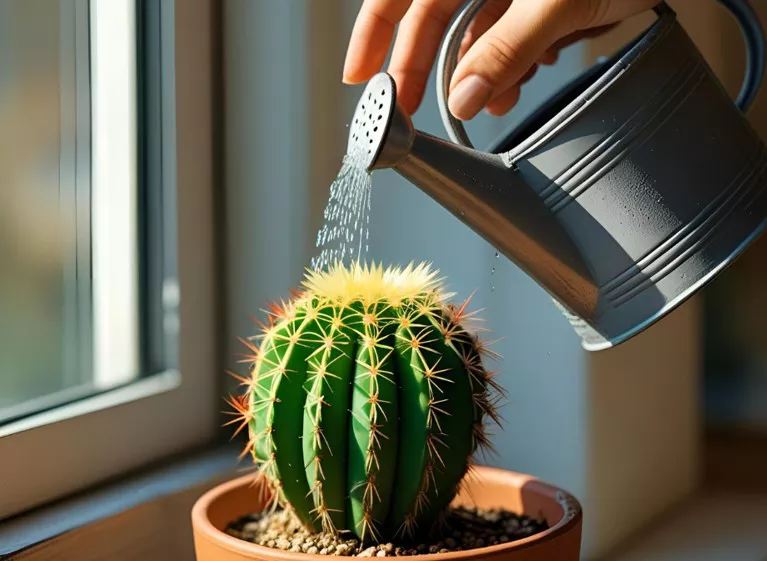
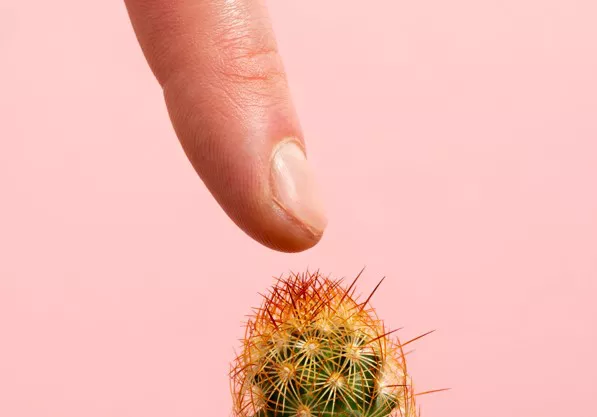
![Types of Rat Tail Cactus Differences and Similarities [With Pictures]](https://cactusology.com/wp-content/uploads/2025/04/Types-of-Rat-Tail-Cactus-Differences-and-Similarities-With-Pictures.jpg)
